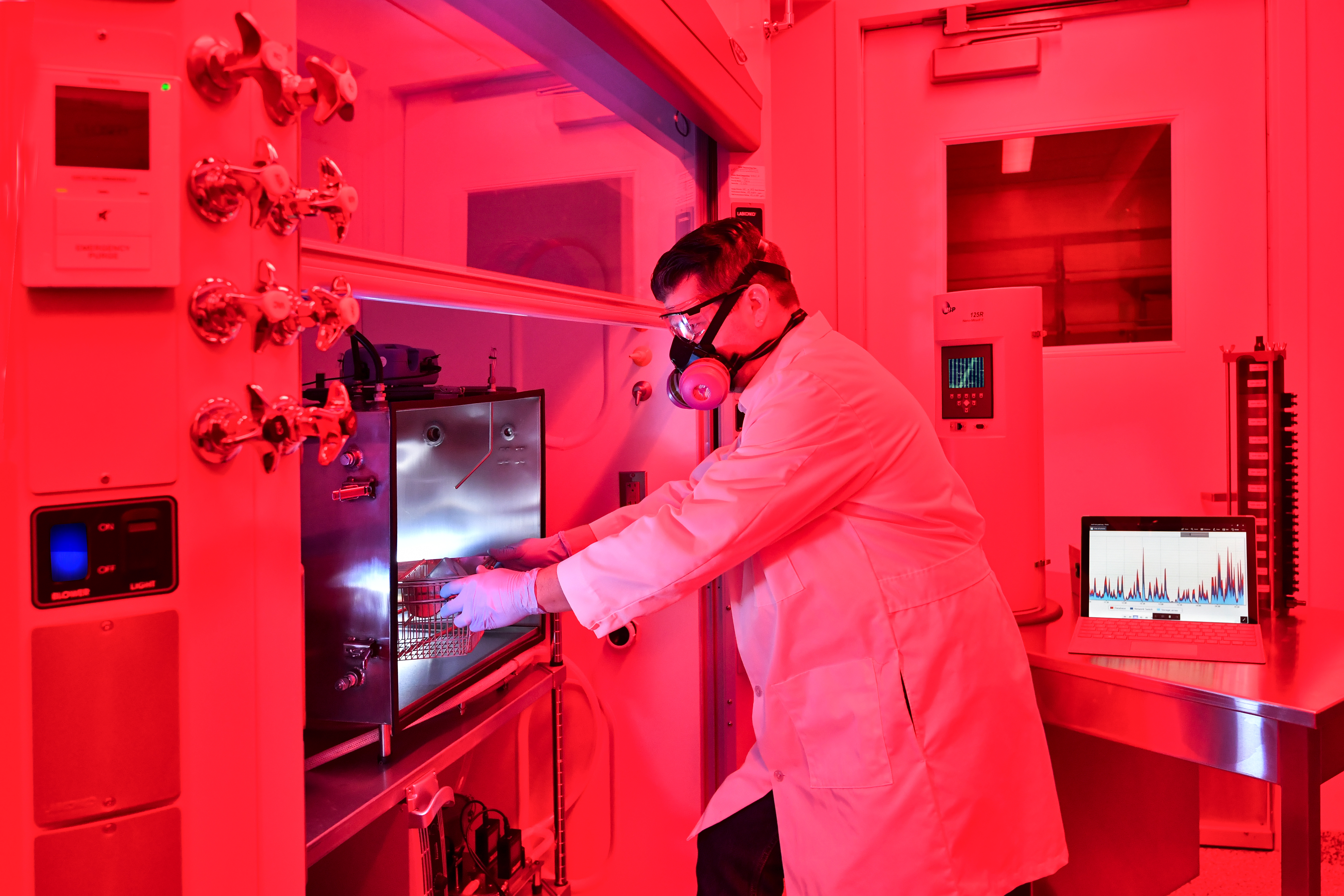 Sunscreen spray, a necessary defense against the risks associated with sun exposure, can present a risk of its own. The reflective nanoparticles that protect your skin can also be inhaled, making it harder for the smallest blood vessels in the body to dilate and contract in response to cells’ needs. We encounter risks such as these every day, in common activities, and the cumulative toll on our health may be at a tipping point.
Sunscreen spray, a necessary defense against the risks associated with sun exposure, can present a risk of its own. The reflective nanoparticles that protect your skin can also be inhaled, making it harder for the smallest blood vessels in the body to dilate and contract in response to cells’ needs. We encounter risks such as these every day, in common activities, and the cumulative toll on our health may be at a tipping point.
West Virginia University’s new Inhalation Facility will be the home for research and collaborations that measure, identify and discover how the particles we breathe affect our health. Timothy Nurkiewicz, a microvascular physiologist in the School of Medicine’s Department of Physiology, Pharmacology and Neuroscience, is the director of the new lab.
Making space for discovery
The facility provides researchers with real-time monitoring capabilities, while the many types of respirable particles it can accommodate during simultaneous experiments make it a standout internationally.
It will also enable upcoming research into how nanomaterials and other inhalable particles from things like e-cigarettes, auto emissions and the aerosols released during 3-D printing may impact our health.
“Usually labs will be able to do nanomaterial exposures or emissions exposures or smoking exposures, but in reality, people are exposed to a variety of toxicants,” said Nurkiewicz.
WVU’s new facility, in which researchers could model anything humans are exposed to, is rare. Such measurements can identify the most beneficial and least hazardous advanced materials and nanomaterials. For example, carbon nanotubes could strengthen bone-fusion materials. Other nanomaterials could coat surgical mesh to keep the immune system from attacking it, or help cancer drugs kill tumors without laying waste to healthy cells in the process.
Nurkiewicz also directs WVU’s newly formed Toxicology Working Group, which strengthens collaborations between WVU’s campuses, the National Institute for Occupational Safety and Healthand industry partners.
Nurkiewicz’s vision for the Inhalation Facility and Toxicology Working Group is to center the inhalation toxicology map on WVU.
He explains that properly identifying exposure and dose is critical, but frequently it is not done with the necessary scientific rigor because it is difficult, expensive and demanding in terms of expertise.
“There are fewer and fewer groups that make these measurements because of the complexity and the cost,” he said. “WVU’s ability to do that at a time when there are always new toxicants being released is an ability few others have. This is a unique time and place to do this type of research, and it is WVU’s moment to go first and make discoveries.”
Investigating how inhaled particles influence pregnancy
Nurkiewicz will also conduct research in the lab, including a new five-year, $1.7 million award from the National Institutes of Health to explore how inhalation exposure to nanoparticles affects pregnant women. The project focuses on two inhaled nanomaterials: titanium dioxide and carbon nanotubes, which are present in sunscreen, cosmetics, paints, filters, electronics and surface coatings.
Nurkiewicz’s research shows that inhaling nanoparticles during pregnancy may cause a “hostile gestational environment” that could impair healthy uterine microvascular development and stunt fetal growth.
He and his team will make complex atmospheres of the two nanoparticles to replicate what humans breathe with animal models. Their goal is to determine how much of these substances can be inhaled by a pregnant woman, for how long and at what point in gestation before fetal development is jeopardized.
Collaborating with researchers from across WVU—including specialists in exercise physiology, chemistry, stroke, and agriculture sciences—Nurkiewicz will pursue answers to questions ranging from when exposure has the greatest impact, to how the placenta can provide protection, to how exposure affects risk of future disease and if effects can be reversed.
The research project will also explore the possibility that maternal nanomaterial exposures early in pregnancy may alter the developing embryo’s genes in ways that influence its risk for adult cardiovascular disease and health sensitivities such as obesity, diabetes and high blood pressure.
There is an ongoing joke that when a toxicologist takes the stage, the audience groans because they will have to hear another doomsday presentation, but Nurkiewicz says that the real-life impact of the research is what drives scientists in the field.
“We do this so that we can use these products – clinical tools and drugs that make us healthier, protect us and make our lives better.”